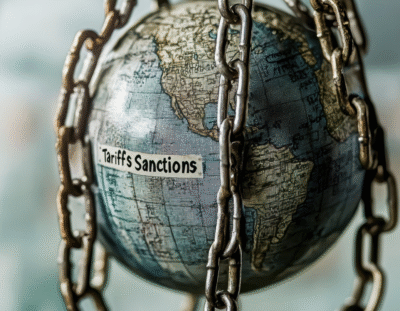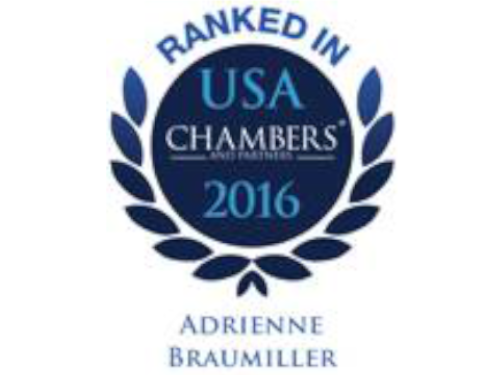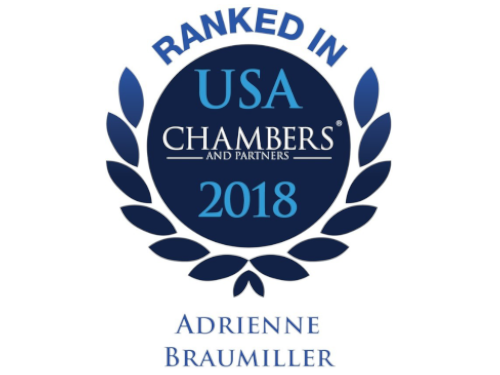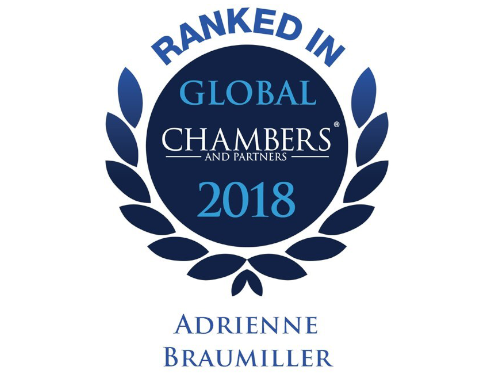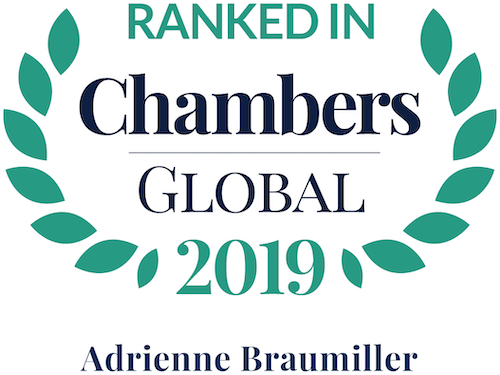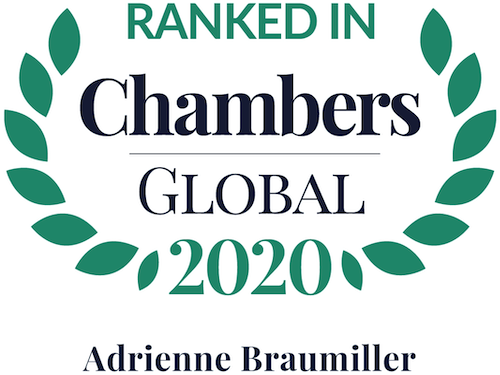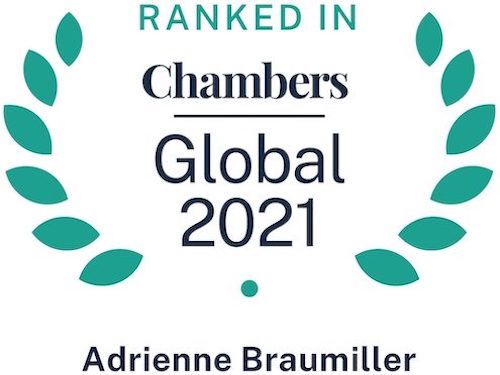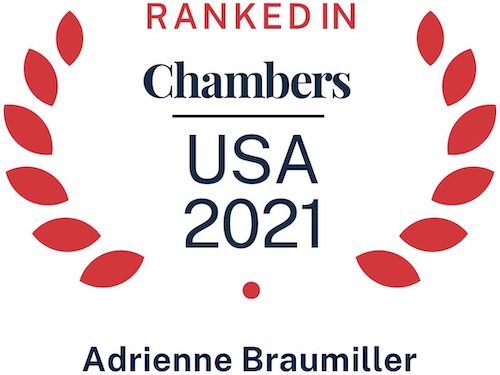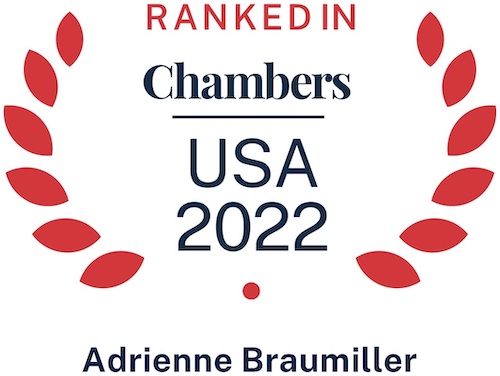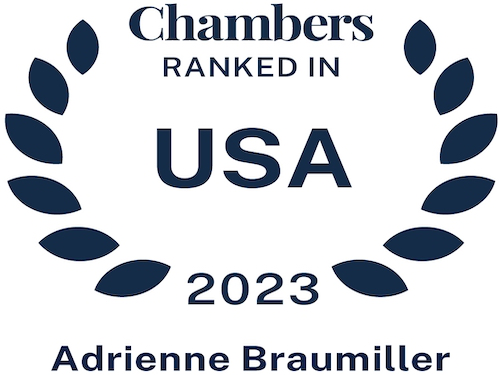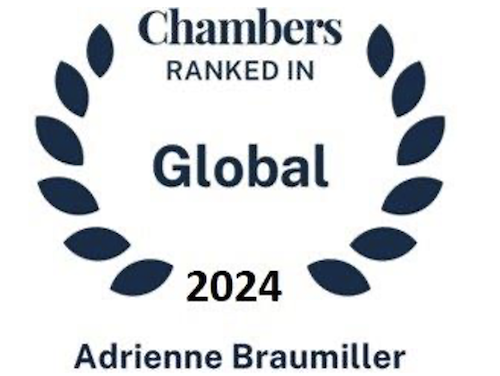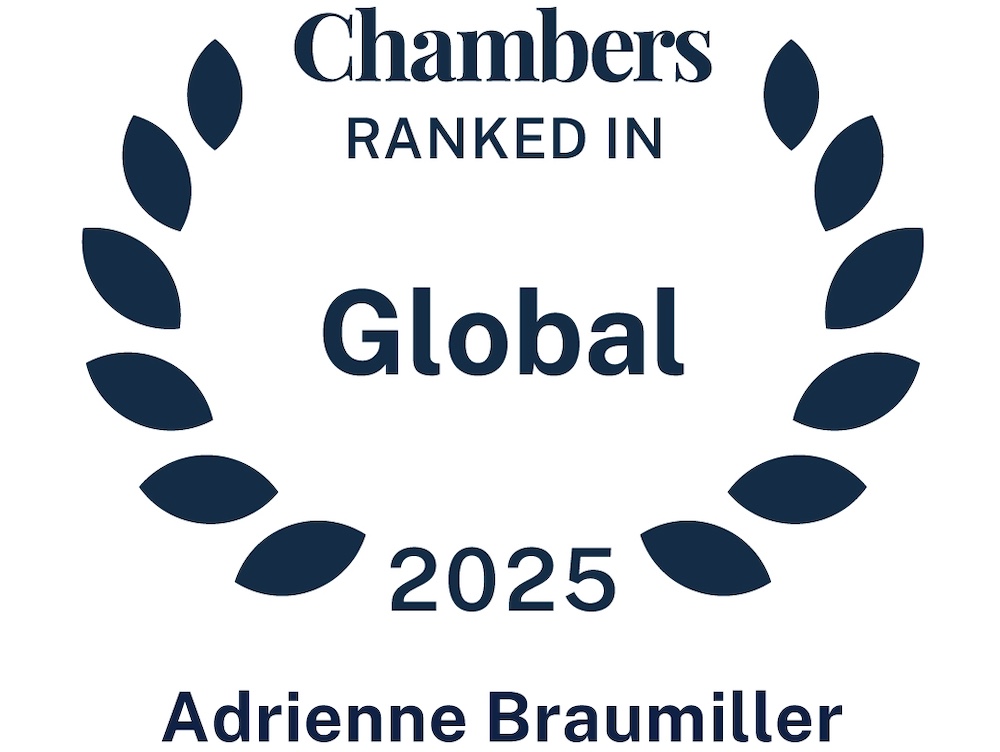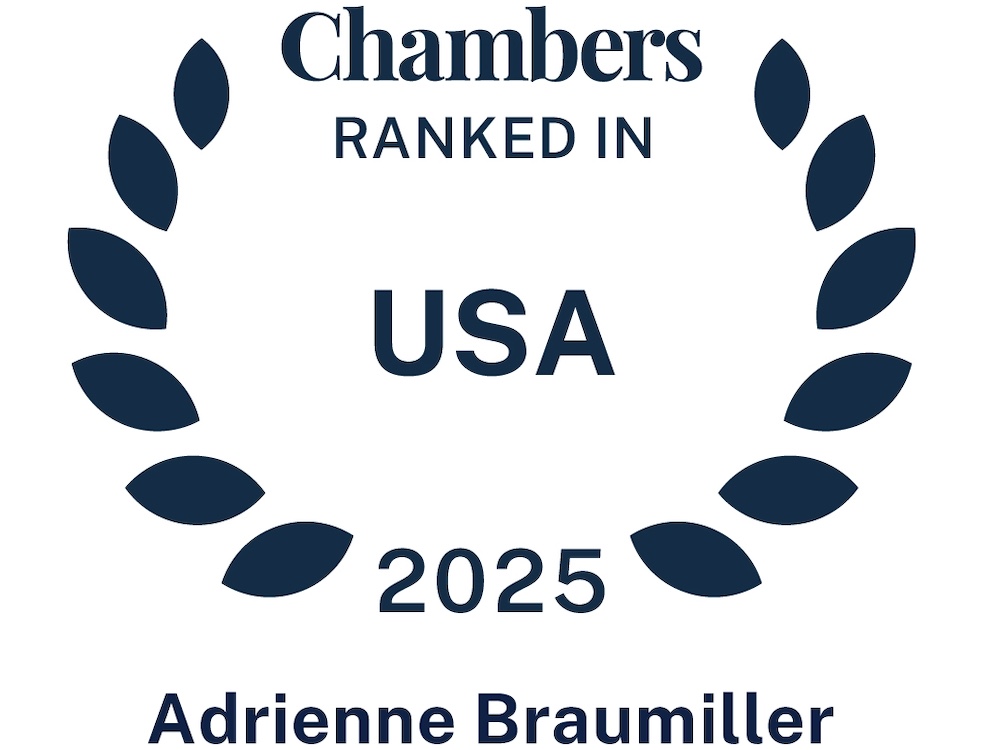Trade Wars & Sanctions – The New Trade Order
A Q&A with Adrienne Braumiller, Founding Partner, Braumiller Law Group, and
Olivia Van Pelt, Braumiller Law Clerk
Question 1: How are you advising businesses in your jurisdiction when protecting themselves from the impact of trade wars and sanctions, and what strategies can professional services firms offer to mitigate these risks?
Only months into President Trump’s second administration and the new tariff regime has already changed the international trade world dramatically. These tariffs have and will continue to significantly impact business’ profitability and operational efficiency. Fortunately, businesses can implement proactive strategies and seek guidance from experts to minimize the impact.
Optimizing logistics and distribution is essential to streamline operations and ensure compliance in this constantly evolving landscape. Businesses may benefit from shortening lead times and automating workflows, routing shipments through optimized ports, and prioritizing documentation. Moreover, consolidating shipments to reduce transportation costs and leveraging local distribution centers are effective tactics for enhancing profitability.
Additionally, advancements in technology are transforming the partnership between customs and the private sector. Embracing these innovations may help uncover vulnerabilities from tariff changes and lead to significant monetary and operational gains.
Furthermore, some strategies may require additional support from professional services to ensure compliance and maximize the benefits of complex trade regulations. These more complex strategies include verifying tariff classification, implementing tariff engineering and utilizing special customs programs.
Tariff classification is critically important in international trade, as the tariff code determines the applicable duties and regulatory requirements. Misclassification may result in overpayments, penalties, legal headaches, or all the above.
First, companies should confirm the tariff classification of their products. If questions arise, E-Rulings by U.S. Customs and Border Protection (CBP) are typically processed within 30 days of submission and serve as legal authority for classification. Moreover, companies should verify the sourcing of all inputs of their products to potentially qualify for a Free Trade Agreement (FTA). FTAs offer preferential rates to companies engaged in trade between contracting countries. This process requires calculating the regional value content, as a minimum percentage of the product’s value must be sourced within the FTA region to benefit from the agreement.
As of this writing, the only comprehensive FTA that is effective in mitigating tariffs is the United States Mexico Canada (USMCA) FTA. However, the UK-USA Trade Deal, officially called the Economic Prosperity Deal (EPD), announced on May 8, 2025 is a limited trade agreement that rolls back some tariffs. Over time, we may see additional trade deals or FTAs that offer tariff avoidance.
To navigate trade and ensure smooth international operations, businesses should also consider special customs programs such as First Sale for Export, Foreign-Trade Zones (FTZs), and bonded warehouses. First Sale for Export is a valuable mitigation strategy for importers with multi-tiered transactions. This program establishes the dutiable value of the merchandise based on the “first sale” between the manufacturer and the wholesaler. The wholesaler’s markup is excluded, thereby significantly lowering the duties owed. While viable, CBP highly scrutinizes First Sale valuation so companies need to ensure that they have set up compliant practices to address the inevitable scrutiny that will likely come.
Moreover, companies can utilize FTZs and bonded warehouses to defer duties and potentially mitigate the worst effects of the current high tariffs. FTZs are designated areas within the U.S. that are considered outside of the country’s Customs territory. Duties on the imported goods can be deferred until they are moved out of the FTZ for domestic consumption. The deferral not only provides significant cost savings but also offers greater flexibility in managing inventory. Similarly, bonded warehouses allow the goods to be stored but not entered into commerce, so duties are deferred until actual entry of the goods. With both regimes, if the goods previously imported and placed in the FTZ or bonded warehouse are subsequently exported, duties and tariffs are avoided.
Businesses must stay agile as the White House flips international trade on its head. While these strategies may require considerable initial investment, they will be critical to ensuring adaptability and maintaining a competitive advantage.
Question 2: Are you seeing shifts in supply chain strategies due to geopolitical conflicts? How can you help clients restructure supply chains to maintain resilience and regulatory compliance?
The tariffs represent a long-term shift in global trade, not a passing movement. Consequently, supply chain resilience and regulatory compliance are essential for an international business to survive. As expected, diversification has emerged as the dominant trend, as companies seek to reduce dependency on a single market, thereby minimizing the impact of abrupt tariff changes.
To reduce vulnerabilities within global supply chains, companies are looking to align with countries that are both geopolitical allies and culturally and economically compatible. This approach allows businesses to leverage political alignment and preferential agreement rates to lower costs and enhance robustness.
Additionally, companies are more focused on strengthening domestic production to reduce reliance on global supply chains that can be easily disrupted by changes in international policy. By shifting to domestic production businesses are hoping to enhance supply chain resilience, tighten quality controls, and eliminate ethical and environmental concerns. As a result, moving operations home may result in significant cost savings in the long run. Especially given that some of the tariffs are reduced by the amount of U.S. content they contain.
These proactive approaches require careful evaluation of the rules of origin and how they affect global supply chains. It is critical to understand that simply changing the source of materials may not be enough. Products must undergo a substantial transformation in the new country to qualify as originating from there. Moreover, this means the product must be fundamentally altered in terms of its name, character, or use.
The choice between making foreign or domestic products has always been a key part of running a successful international business. However, with the current trade environment and President Trump’s pen, the decision is increasingly consequential. Seeking professional advice is important to ensure compliance with country-of-origin rules and maximize the benefits of trade agreements.
Question 3: With global markets in flux, how can businesses balance risk and opportunity in cross-border trade, and what strategic guidance can you provide?
The unpredictability of tariffs makes long-term planning and regulatory compliance difficult for businesses. More so than ever, companies will have to decide when to take risks and act on opportunities.
One way to balance risk and opportunity in international trade is to leverage legal avenues. Businesses should consider adding tariff clauses and reviewing International Commercial Terms (Incoterms) to shift tariff costs and risks. Moreover, force majeure clauses can provide relief when tariff changes make contractual obligations impossible to fulfil.
Additionally, to effectively hedge against currency and freight volatility, businesses should lock in future exchange rates, align revenues and expenses in the same currency and negotiate long-term agreements to provide certainty and predictability in costs. Moreover, modelling different tariff scenarios on budgeting will enable leaders to make more informed decisions, ensuring their company maintains its competitive edge.
Furthermore, as agencies take actions to implement President Trump’s Executive Orders, it will be important for industries to take advantage of comment periods to provide input in the decision-making process. Experts in a field may be able to present helpful data or an alternative way a regulation could be designed to benefit their business. Additionally, a company may pursue an adversarial approach by appealing decisions, challenging agency actions as unconstitutional under the Major Questions Doctrine, using monetary damages under the new tariff regime as standing to raise issues in U.S. district courts, and seeking injunctions because of irreparable harm for compliance with agency actions beyond the scope of legal authority.
In recent legal challenges, the U.S. Court of International Trade (CIT) and the D.C. Federal District Court have struck down tariffs imposed under the International Emergency Economic Powers Act (IEEPA), declaring them unconstitutional. These decisions challenge the executive branch’s authority to levy tariffs without congressional approval, reinforcing the constitutional separation of powers in trade regulation. However, both cases are currently on appeal, meaning the legal battle over IEEPA tariffs is far from settled. In the meantime, importers must continue paying these tariffs, as no immediate relief has been granted. Despite these legal challenges, The President may still seek to impose tariffs through other legal avenues, including Section 301 of the Trade Act of 1974, Section 232 of the Trade Expansion Act of 1962, and Section 338 of the Tariff Act of 1930, which provide statutory mechanisms for trade enforcement. The ongoing litigation and potential appeals could shape the future of U.S. tariff policy, leaving importers and businesses in a state of uncertainty.
Regardless, companies that adopt proactive tactics and demonstrate an openness to novel approaches will more likely succeed in the long run.
Read more articles by these authors:
Adrienne Braumiller – https://www.braumillerlaw.com/author/adriennebraumiller/
Olivia Van Pelt – https://www.braumillerlaw.com/author/olivia-van-pelt/

